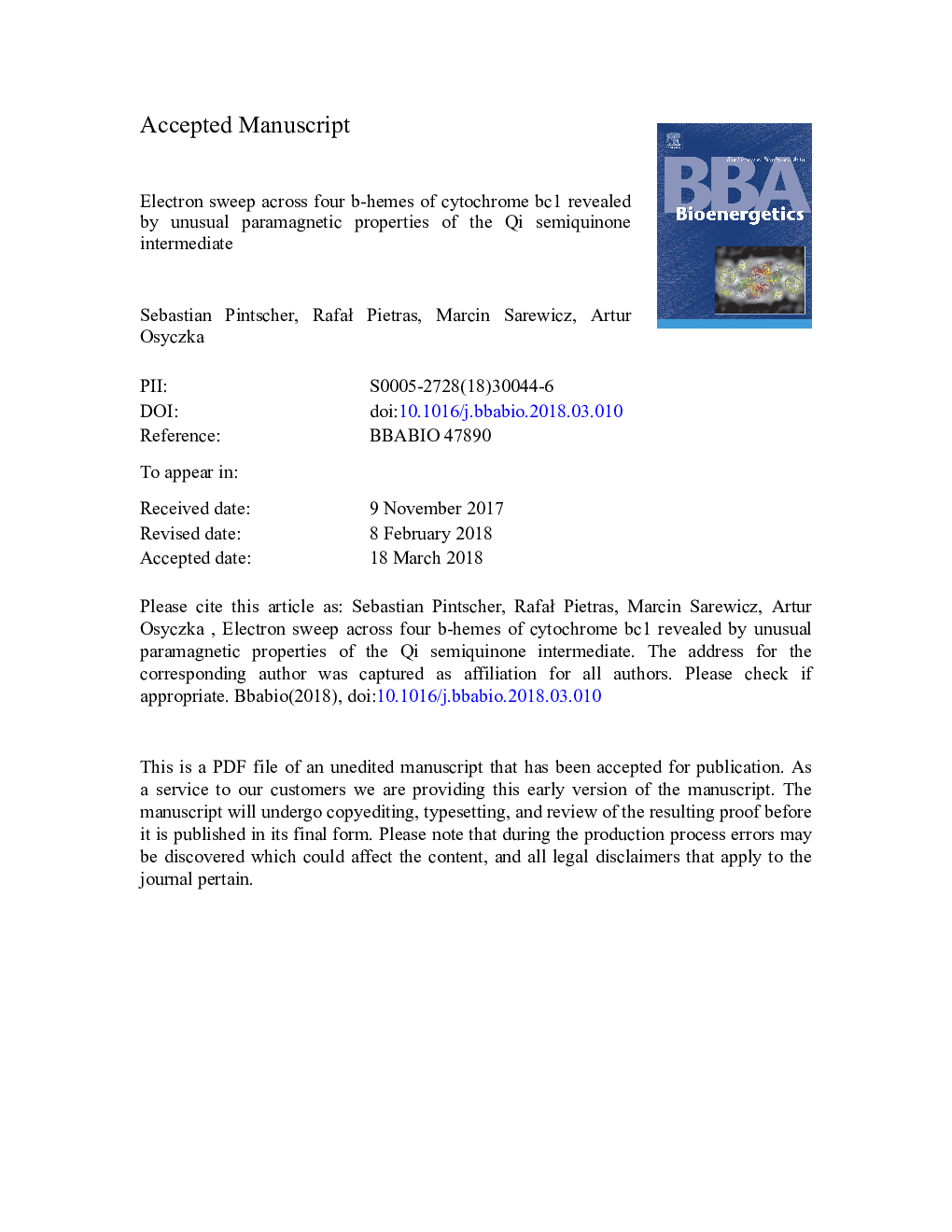| Article ID | Journal | Published Year | Pages | File Type |
|---|---|---|---|---|
| 8298577 | Biochimica et Biophysica Acta (BBA) - Bioenergetics | 2018 | 25 Pages |
Abstract
Dimeric cytochromes bc are central components of photosynthetic and respiratory electron transport chains. In their catalytic core, four hemes b connect four quinone (Q) binding sites. Two of these sites, Qi sites, reduce quinone to quinol (QH2) in a step-wise reaction, involving a stable semiquinone intermediate (SQi). However, the interaction of the SQi with the adjacent hemes remains largely unexplored. Here, by revealing the existence of two populations of SQi differing in paramagnetic relaxation, we present a new mechanistic insight into this interaction. Benefiting from a clear separation of these SQi species in mutants with a changed redox midpoint potential of hemes b, we identified that the fast-relaxing SQi (SQiF) corresponds to the form magnetically coupled with the oxidized heme bH (the heme b adjacent to the Qi site), while the slow-relaxing SQi (SQiS) reflects the form present alongside the reduced (and diamagnetic) heme bH. This so far unreported SQiF calls for a reinvestigation of the thermodynamic properties of SQi and the Qi site. The existence of SQiF in the native enzyme reveals a possibility of an extended electron equilibration within the dimer, involving all four hemes b and both Qi sites. This substantiates the predicted earlier electron transfer acting to sweep the b-chain of reduced hemes b to diminish generation of reactive oxygen species by cytochrome bc1. In analogy to the Qi site, we anticipate that the quinone binding sites in other enzymes may contain yet undetected semiquinones which interact magnetically with oxidized hemes upon progress of catalytic reactions.
Keywords
Related Topics
Life Sciences
Agricultural and Biological Sciences
Plant Science
Authors
Sebastian Pintscher, RafaÅ Pietras, Marcin Sarewicz, Artur Osyczka,
